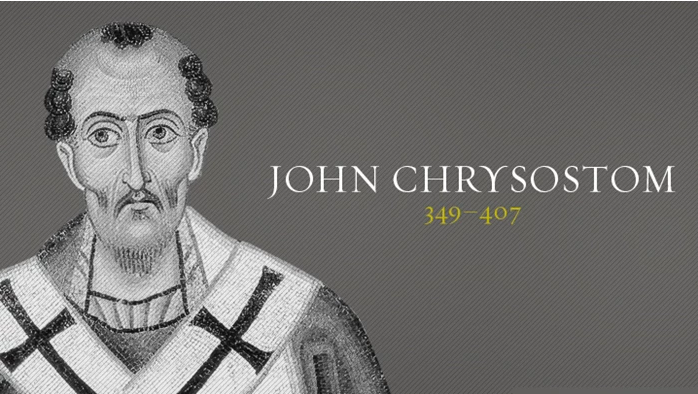
A lectionary (Latin: lectionarium) is a book or listing that contains a collection of scripture readings appointed for Christian or Jewish worship on a given day or occasion. There are sub-types such as a "gospel lectionary" or evangeliary, and an epistolary with the readings from the New Testament Epistles.
Both Hebrew and Christian lectionaries developed over the centuries. Typically, a lectionary will go through the scriptures in a logical pattern, and also include selections which were chosen by the religious community for their appropriateness to particular occasions. The one-year Jewish lectionary reads the entirety of the Torah within the space of a year and may have begun in the Babylonian Jewish community; the three-year Jewish lectionary seems to trace its origin to the Jewish community in and around the Holy Land.
Within Christianity, the use of pre-assigned, scheduled readings from the scriptures can be traced back to the early church, and seems to have developed out of the practices of the second temple period. The earliest documentary record of a special book of readings is a reference by Gennadius of Massilia to a work produced by Musaeus of Marseilles at the request of Bishop Venerius of Marseilles, who died in 452, though there are 3rd-century references to liturgical readers as a special role in the clergy.
SEASON AFTER PENTECOST
Pentecost season, also known Pentecostide, as well as the time of Sundays after Pentecost or Sundays after Trinity, is a liturgical period, celebrated by some Christian churches, which immediately follows the Easter season. Although the start and end dates vary by liturgical tradition, the season typically begins on the day of Pentecost and continues throughout the rest of the liturgical year, ending just before the season of Advent. The liturgical color for this period is typically green or red.
The Season After Pentecost is essentially the part of the year that is left over after everything has been accounted for. The name of this season varies widely from church to church—it can be called Kingdomtide, Dominiontide, or Ordinary Time. In most churches, the general theme of the Bible readings and sermons concerns the church’s mission in the world. The Season After Pentecost begins on 20 May 2024, the day after Pentecost. In the Western Church, it ends on 30 November 2024, the day before the First Sunday of Advent. In the Eastern Church, it ends on 14 November.
-
PENTECOST 10
-
PENTECOST 11
-
ONLINE RESOURCES

"Preaching improves me. When I begin to speak, weariness disappears; when I begin to teach, fatigue too disappears."
Commentary and Critical Thinking
A homily (from Greek ὁμιλία, homilía) is a commentary that follows a reading of scripture, giving the "public explanation of a sacred doctrine" or text. The works of Origen and John Chrysostom (known as Paschal Homily) are considered exemplary forms of Christian homily. In Catholic, Anglican, Lutheran, and Eastern Orthodox churches, a homily is usually given during Mass (Divine Liturgy or Holy Qurbana for Orthodox and Eastern Catholic Churches, and Divine Service for the Lutheran Church) at the end of the Liturgy of the Word. Many people consider it synonymous with a sermon. The English word homily is derived from the Ancient Greek word ὁμιλία homilia, which means intercourse or interaction with other people (derived from the word homilos, meaning "a gathering"). The word is used in 1 Corinthians 15:33 ("wicked homiliai corrupt good morals"). The related verb is used in Luke 24:14 (as homiloun), and in Acts 24:26 (as homilei), both used in the sense of "speaking with". The word later came to have a more technical sense. According to The Catholic Encyclopedia, Origen was the first to distinguish between logos (sermo) and homilia (tractatus).
Exegesis from the Greek ἐξήγησις, from ἐξηγεῖσθαι, "to lead out") is a critical explanation or interpretation of a text. The term is traditionally applied to the interpretation of Biblical works. In modern usage, exegesis can involve critical interpretations of virtually any text, including not just religious texts but also philosophy, literature, or virtually any other genre of writing. The phrase Biblical exegesis can be used to distinguish studies of the Bible from other critical textual explanations. Textual criticism investigates the history and origins of the text, but exegesis may include the study of the historical and cultural backgrounds of the author, text, and original audience. Other analyses include classification of the type of literary genres presented in the text and analysis of grammatical and syntactical features in the text itself. -
SERVICE SCHEDULE
-
PRAYER BOOKS
The liturgical texts in this section have been authorized by General Synod for public use within the Anglican Church of Canada, upon permission from the diocesan bishop. Copyright policies stipulate that these texts may be used free of charge by all dioceses, parishes, religious orders, theological colleges, and other entities within the Anglican Church of Canada and our full-communion partner, the Evangelical Lutheran Church in Canada. Care must be taken to acknowledge the sources of all texts, however used. Any publication of texts that have been amended must be acknowledged in such a way that makes clear that the original text has been modified. No commercial use may be made of these texts without specific written permission from the primary copyright holders of the texts.
Occasional Celebrations
The forms provided in this book should be regarded as models andnot as rigid scripts whose details must be followed exactly. Thesetexts should be used as the basis of adaptation which evokes theliturgical creativity of the local church. For instance, the materialprovided for each of the seasonal festivals of readings and music ismuch more abundant than any congregation could use on oneoccasion. Similarly, the section devoted to the subject of blessingprovides not only suggestions for those who wish to write theirown forms of blessing but also theological reflection on theprinciples involved.
Pray Without Ceasing
Pray Without Ceasing is the work ofThe Venerable Dr. Richard Leggett who presented it to the Liturgy Task Force of the Faith, Worship, and Ministry committee for use during their work from 2011 to 2016. Following that period of use and review, the texts were authorized by The General Synod2016 for a period of trial use and evaluation. In 2019 the General Synod authorized the texts for use in The Anglican Church of Canada where permitted by the Ordinary.
DESIGN BY
H2 DESIGN PIXEL
https://rondeaubaytransfiguration.org/resources/blogpage/
https://rondeaubaytransfiguration.org/resources/lectionary/
https://rondeaubaytransfiguration.org/
https://rondeaubaytransfiguration.org/rites/funerals/
https://rondeaubaytransfiguration.org/rites/baptism/
https://rondeaubaytransfiguration.org/rites/weddings/
https://rondeaubaytransfiguration.org/churches/stjohns/
https://rondeaubaytransfiguration.org/churches/stmatthews/
https://rondeaubaytransfiguration.org/churches/christchurch/
https://rondeaubaytransfiguration.org/churches/advent/
https://rondeaubaytransfiguration.org/churches/trinity/
https://rondeaubaytransfiguration.org/churches/stpauls/
https://rondeaubaytransfiguration.org/#top
https://rondeaubaytransfiguration.org/#section1
https://www.rondeaubaytransfiguration.org/Statistics/
https://www.rondeaubaytransfiguration.org/resources/blogpage/
https://www.rondeaubaytransfiguration.org/resources/lectionary/
https://www.rondeaubaytransfiguration.org/
https://www.rondeaubaytransfiguration.org/rites/funerals/
https://www.rondeaubaytransfiguration.org/rites/baptism/
https://www.rondeaubaytransfiguration.org/rites/weddings/
https://www.rondeaubaytransfiguration.org/churches/stjohns/
https://www.rondeaubaytransfiguration.org/churches/stmatthews/
https://www.rondeaubaytransfiguration.org/churches/christchurch/
https://www.rondeaubaytransfiguration.org/churches/advent/
https://www.rondeaubaytransfiguration.org/churches/trinity/
https://www.rondeaubaytransfiguration.org/churches/stpauls/
https://www.rondeaubaytransfiguration.org/#top
https://www.rondeaubaytransfiguration.org/#section1












